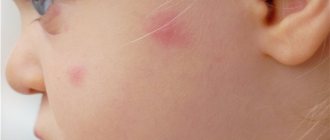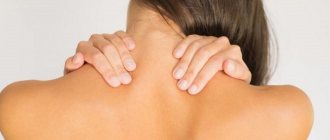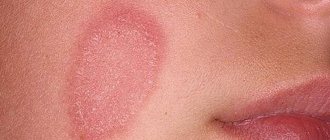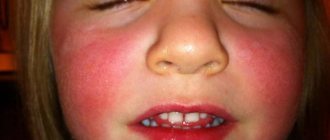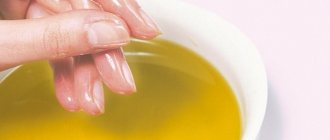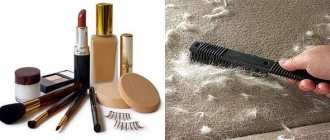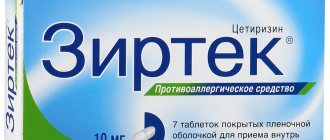Can tanning beds cause allergic reactions?
Having come to the treatment room for a beautiful tan, you can return home with small red pimples, swelling and other pathological changes in the skin.
There is a high probability that this is an allergy after solarium, which can be triggered by the following factors:
Exposure to ultraviolet radiation. Directly, such rays are not allergens for the body, but when taking medications, they can cause an allergic reaction in internal organs.
Reaction to chemicals. The composition of disinfectants used to treat tanning beds or cosmetic preparations for the client’s skin often includes substances belonging to the group of allergens.
It should also be taken into account that each type of allergy to solarium has certain symptoms and signs.
What to do to avoid getting burned
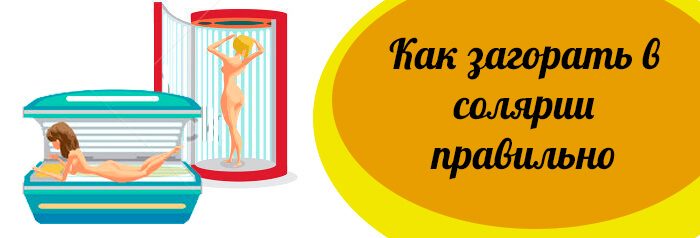
Basic rules for tanning in a solarium:
- If you need to carry out a peeling procedure, then this can be done only a week before tanning, so that the skin cells have time to recover.
- You can remove unwanted hair at least a week before the procedure. Otherwise, the risk of sunburn increases.
- You cannot sunbathe in a solarium with decorative cosmetics, because they may contain alcohol or aggressive chemical elements that will lead to sunburn.
- You can take a shower at least two hours before tanning so that your skin has time to dry and prepare for ultraviolet radiation.
- Be sure to apply a high-quality sunscreen intended for solariums to dry skin a few minutes before the procedure. You should also consider your skin type.
- You should limit your time in the solarium, especially for people with white skin. You need to start with 2 minutes in order to identify possible adverse reactions in time. The duration of the first sessions should not exceed 5 minutes. This is quite enough to get a beautiful tan without side effects.
- You can sunbathe no more than twice a week, with an interval of at least 24 hours. To maintain a tan, it is enough to visit the solarium once a week for 5 minutes.
- All tender and intimate places should be covered with underwear or special pads. This also includes moles, neoplasms of unknown origin, permanent makeup and tattoos.
- It is not recommended to wash after tanning. You need to wait 4 hours and only then take a cool shower. Hot baths, swimming pools, saunas, peeling and laser hair removal are also contraindicated.
- Nourishing creams should be applied to clean skin daily to restore the skin after intense ultraviolet exposure.
It is also interesting Quartz tanning lamp, how it works, where it is used, precautions
The main reasons for the development of allergies
There are not many reasons why an inflammatory process may develop, but there are:
- Expiration date or poor quality composition of products used before and after procedures.
- Excess cosmetics, particles of which react with ultraviolet rays. Even perfumes and natural cosmetics can cause irritation.
- Ultraviolet intolerance due to diseases of internal organs, endocrine system and helminthic infestations.
- Reaction to the products used to treat the solarium cabinet and equipment.
- Minor damage to the skin.
- Taking hormonal drugs and antibiotics.
Why do acne appear after tanning on the body?
Sometimes after sunbathing, not only peeling appears, but also acne. Moreover, they are often accompanied by pain and itching. The reasons for their occurrence can be quite harmless, and sometimes they can indicate serious diseases.
They become a consequence and indicator of the development of some dangerous ailments, or themselves provoke disorders in the dermis.
On the back and shoulders
Most often, acne appears after sunbathing on the back and shoulders. These parts of the body are exposed to ultraviolet radiation for more time. Because of this, the sebaceous glands are activated and they begin to secrete more sebum.
Moreover, from ultraviolet radiation the skin begins to thicken in order to develop additional protection from the sun. As a result, the pores become clogged, plus dirt, dust and bacteria get into them. This is why inflammation and acne appear after sunbathing.
It is also worth remembering that droplets of water on the skin act like lenses. They increase exposure to UV rays. As a result, the skin overheats and burns. Therefore, in this case, the appearance of acne on different parts of the body after sunbathing is the body’s response to sun damage. They may also be accompanied by swelling and itching. These are all symptoms of allergic sensitivity or photodermatitis. It occurs when there is a deficiency in the synthesis of melanin in the skin to protect it from UV rays.
Pimples on the shoulders after sunbathing may be due to sensitivity of the dermis to sunscreen cosmetic products. In other words, SPF cream is not suitable for the skin; it contains too many preservatives, fragrances or chemical filters. In this case, it will be enough to change the sunscreen. The sun can also enhance the effect of moisturizing lotions, perfumes, and deodorants. Therefore, it is better not to overdo it with such products on the beach.
READ ALSO: Hives at night: why it appears at night
And here is more information about solariums for acne.
On the chest
It is also common for acne to appear on the chest after tanning and sunbathing. This makes it difficult to wear open dresses and sundresses. To begin to fight acne in this area, you need to understand the causes of its occurrence. Acne appears after tanning in the sun:
- Due to blockage of the sebaceous ducts. In the heat, the body heats up, the skin sebum is released much more, and the invading bacteria begin inflammation.
- Uncomfortable clothing rubs, increases irritation, and interferes with natural ventilation. This is especially true for synthetic materials. Tight bras and tops interfere with normal heat transfer. Clogged pores become irritated and inflamed.
- Acne on the chest can also be evidence of disturbances in the functioning of internal organs, in particular the stomach, intestines, thyroid gland and reproductive system. Under the influence of ultraviolet radiation, processes intensify; the sun becomes a kind of catalyst.
- Acne may appear on the chest after exposure to the sun due to a reaction to perfume.
Reds
Acne caused by exposure to ultraviolet rays varies in nature. Sometimes pimples turn red after sunbathing. They may also be accompanied by pain, peeling, and itching. In addition, such pimples are usually not large in size, do not separate into separate formations, but cover the surface of the skin with a general rash. They may not have a clear shape and a purulent head.
Such acne after sunbathing is a response to ultraviolet intolerance. The person has been in the sun for too long. People of the Scandinavian phototype are susceptible to this, since they produce little melanin for protection. In this case, sunbathing is contraindicated, only in the shade and with high SPF sunscreens.
Small white
Another type of acne can be small white acne. However, these are not exactly pimples, but milia, that is, brushes that are filled with keratin and protein under the skin. Their main difference from acne is that they do not form in the pores, which means they have no outlet.
These are most often characteristic of oily skin types. Small pimples after sunbathing are more like comedones. The dermis becomes rougher, there are more dead cells. If hygiene is insufficient, they become hidden under the skin. This is how sebaceous plugs form.
Also, the cause of the appearance of white pimples after sunbathing may be the body’s reaction to changing climatic conditions. This is especially true when traveling to hot countries from a cold winter.
Such acne after sunbathing can become a reaction of the skin on the face to the use of incorrect and inappropriate cosmetics. And small white acne in the chin area is a sign of gynecological problems. The sun only enhances the reaction of the dermis to the processes occurring in the body.
Symptoms of allergic reactions
When an allergy manifests itself, the symptoms are similar in nature to a special case of dermatosis:
- erythema of the skin;
- dryness and flaking;
- rash, red pimples;
- swelling of the skin;
- pustules.
All of the above symptoms cause a lot of discomfort. In addition to spoiling the aesthetic appearance of the skin, allergies are accompanied by severe itching and burning. The localization of symptoms mainly occurs on delicate areas of the skin: face, neck, chest. In some cases, the lesions include the legs, arms, and torso. You can see what allergies look like after tanning in the photo below.

Photo of allergies to solarium.
How to remove redness and burns after solarium
How to remove redness after solarium?
You can use pharmacy or traditional methods. Before using any method, it is recommended to consult a specialist to avoid adverse reactions in the future.
Removing skin redness
If your skin is burned in a solarium, recommendations and tips:
- It is recommended to take medications for burns with you to the solarium, which will quickly relieve redness and swelling.
- You can make a cold compress at home. Simply soak a towel in cold water and apply to the affected area of the body. You can also use chilled decoctions of medicinal herbs.
Special means
How to relieve redness after solarium?
There are special cosmetic products that can quickly relieve side effects after tanning. They mainly contain plant extracts that stop the inflammatory process and soothe the skin after ultraviolet exposure.
Medicines
At the pharmacy you can buy drugs that treat burns of various types.
- Panthenol, which relieves redness and swelling after ultraviolet exposure, can be applied to the affected skin several times a day.
- Rescuer. Apply the cream to the damaged area of the skin several times a day until all side symptoms are completely removed.
- Fenistil-gel. Relieves pain, redness and swelling after solarium.
- Bepanten. Stops the inflammatory process and accelerates the recovery of affected cells after ultraviolet exposure.
- Zinc ointment. Accelerates wound healing, destroys pathogenic bacteria, restores damaged tissue.
It is also interesting: Is it possible to visit a solarium during pregnancy, rules for visiting a solarium for an expectant mother
Traditional methods
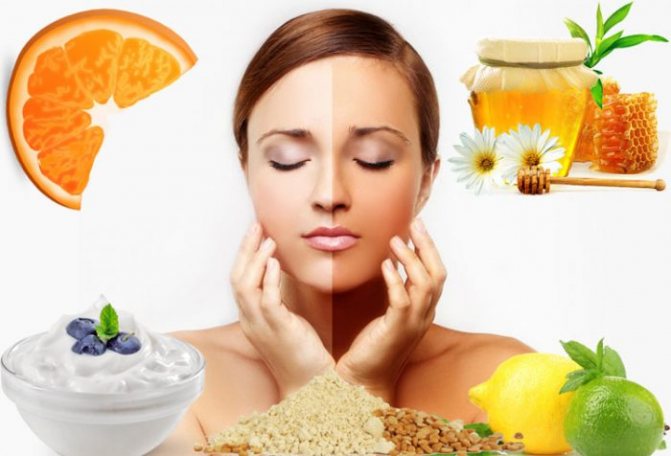
Traditional methods will help remove redness:
- Fermented milk products help to easily relieve the first symptoms of sunburn. In this case, you need to choose only natural sour cream or kefir to relieve redness and swelling after solarium.
- Potatoes or cucumbers are great for the first stage of sunburn. Soothe irritated skin and stop the inflammatory process. Chop vegetables and make cooling compresses.
- Decoctions of medicinal herbs, for example, chamomile or string, stop the inflammatory process, restore the water balance of cells, and accelerate the regeneration of affected tissues.
- We wipe the affected skin with cooled watermelon juice several times a day until the symptoms of sunburn are completely relieved.
- To stop the inflammatory process and restore the skin after ultraviolet exposure, you can use aloe juice.
- A compress of cold sauerkraut soothes irritated skin and relieves pain.
What to do if you are allergic to solariums
In most cases, typical manifestations of dermatosis disappear after a few days; otherwise, you need to seek help from a qualified allergist. The action plan for allergic reactions to solariums is as follows:
- Take a shower to wash off any remaining substances that caused irritation from your body.
- If the itching does not go away for a long time, take an antihistamine. Additionally, you can apply a thin layer of zinc ointment or a product containing lanolin to the affected areas.
Important! In order not to aggravate the inflammatory process, visits to the solarium should be avoided in order to find out the cause of the reaction. Only a doctor can establish an accurate diagnosis and identify the allergen using special diagnostics.
Allergies to tanning beds should be taken very seriously. If the reason is not in the chemical components, but in intolerance to ultraviolet rays, in the future, the reaction may also manifest itself from exposure to the sun.
Skin care after solarium
In order to restore your skin after intense ultraviolet exposure, you need to learn how to properly care for it.
- Take a cool shower every day and apply restorative and moisturizing products to dry skin. This will restore the water balance of the cells, maintain the firmness and elasticity of the tissues, and also fix the tan.
- It is not recommended to use cosmetics immediately after tanning. The skin should rest. Chemical elements contained in decorative cosmetics can cause irritation of the upper layer of the epidermis.
- It is not recommended to take hot baths or visit a sauna. You can wash with cool water without aggressive detergents. You should also avoid visiting swimming pools, where chlorinated water can irritate the skin, causing adverse reactions.
- Removal of unwanted hair should be postponed for a week to allow the skin time to recover from ultraviolet exposure.
Treatment
Only the attending physician can make a diagnosis and prescribe treatment. In most cases, to collect an anamnesis, the patient’s testimony, examination, tests and dermatoscopy are sufficient. Determination of the type of allergen is carried out using application tests. As in the fight against other allergic diseases, treatment requires an integrated approach of a number of measures:
- eliminating environmental contact with the allergen;
- prescribing appropriate medications;
- prevention and protection from ultraviolet radiation.
If there are other indications, physiotherapeutic procedures are prescribed.
Effective medications for allergies to solariums
Treatment with medications for this type of irritation, in addition to antihistamines, should also include special ointments and creams:
- Fluorocort. Available in the form of ointment or cream.
- Betamethasone. Release form: cream.
- Nurofen. Gel with anti-inflammatory properties.
- Zinc paste, etc.
What folk remedies can be used
Willow branches will help against allergies:
Pour 400-500 g into a 5-liter container with hot water. broken willow branches and let it brew for 12 hours. Before taking a bath, preheat the infusion and pour it into a container for procedures. Duration of treatment is 10 days.
How to get rid of acne after sunbathing
The first thing to do is to limit your exposure to direct ultraviolet rays. To do this, it is better to stay more in the shade, not to go outside at the very peak of the heat, and to cover your head, shoulders, back and chest with loose-fitting clothes made from natural materials.
You also need to stop using any cosmetics for a while: both skin care and decorative. You cannot wear perfume. It is likely that acne could appear as an allergic reaction.
You need to reconsider your diet. One of the causes of acne may be the body's reaction to some new product, especially if a person is on vacation in an exotic country. But even if you don’t eat, you need to adjust your diet.
READ ALSO: Oral abscesses: purulent inflammation of the gums, tongue, cheek or palate
Excessive slagging and an unbalanced diet worsen the condition of the skin. The basis of the menu should include fruits, vegetables, proteins, complex carbohydrates, as well as more water. But sweets, baked goods, instant coffee, and fast food should be excluded.
If you have acne, you should not use scrubs to cleanse. To remove the top stratum corneum, especially in the case of milia, peeling is suitable. It gently removes dead skin cells and evens out skin texture. Sebaceous plugs come out, inflammation decreases.
The epidermis can also be treated for acne:
- spot on salicylic acid;
- aloe juice to moisturize and relieve inflammation;
- boric acid;
- a mixture of aloe and natural honey;
- a solution of clay with essential oils of tea tree and citrus fruits.
If acne causes discomfort, pain and itches severely, you should immediately consult a doctor.
If acne after sunbathing is allergic in nature, then you should immediately take antihistamines, such as suprastin, claritin, loratadine, cetirizine. The medicine should be taken strictly according to the instructions.
Diagnosis of the disease
Allergies are similar to other skin diseases. Because of this, before deciding what to do to eliminate it, you need to make sure that the intended diagnosis is accurate.
Methods used for this:
- Photo test. It involves briefly irradiating the skin with ultraviolet light to detect a reaction.
- Application test. It can be used to identify photodermatosis.
- Analysis of urine.
- Blood analysis.
Taking a history and identifying the circumstances surrounding the appearance of allergy symptoms also helps in making a diagnosis.
Solarium: benefit or harm
The activity of ultraviolet radiation is 100 times greater than the activity of solar radiation. Solarium lamps emit two types of ultraviolet rays: long and short. The desired tan is nothing more than a protective reaction of the skin to an external irritant. Ultraviolet rays provoke increased production of melanin, which is designed to protect our skin. Solarium is a carcinogenic factor (i.e., cancer-forming), so there is no need to talk about the benefits of this fashionable procedure.
But it's not all bad, and there are quite safe methods of getting a tan. A useful alternative might be:
- Light capsules. They allow the client to remember the sun.
- Infrared saunas. They generate heat.
But there are some benefits to using a solarium. For medicinal purposes, sunbathing in a solarium is recommended for sick people suffering from psoriasis. The dose is minimal and targeted (i.e., ultraviolet rays are directed exclusively to the affected areas) and strictly controlled by doctors.
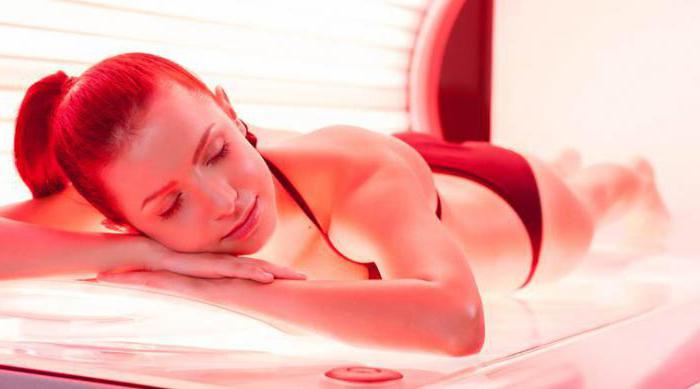
Allergy symptoms
Allergies to tanning beds can be localized to specific areas (such as the face) or throughout the body, and they vary in appearance.
Essentially, this is a type of dermatosis, and its manifestations are as follows:
- peeling;
- dry skin;
- redness;
- pimples;
- rash;
- swelling;
- itching;
- burning;
- formation of purulent papules.
Photos of allergy manifestations after solarium:
During an allergic reaction, all or some of these symptoms may appear. In a mild form, the allergy goes away on its own within a few days, but in the future, periods of exacerbations will drag on.
